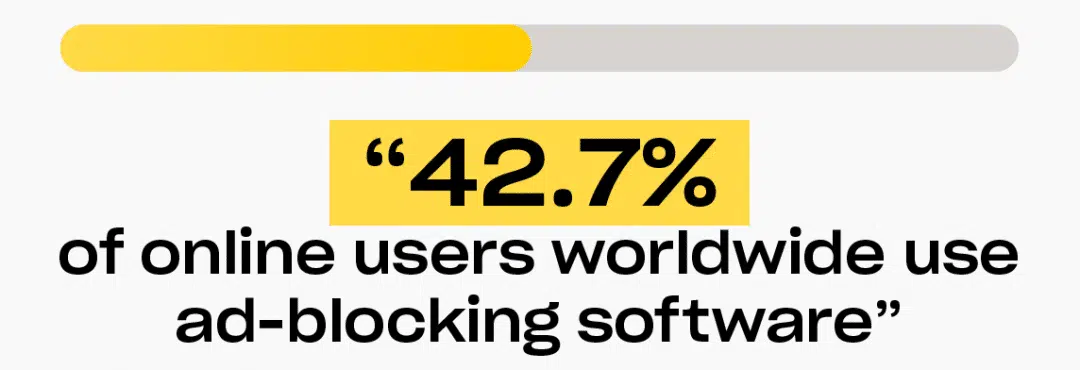As the Internet grows, an increasing number of consumers are becoming impatient and unsatisfied with conventional online advertising.
The reason for this is that we live in a world where ads can be avoided. For example, we can use streaming services to avoid TV adverts or choose ad-free radio stations to listen to when we’re driving. But when it comes to Internet use, we’re still obliged to constantly consume ads, whether we’re trying to read the news, watch a video, or shop online.
For every problem, there is a solution, however. And for many people, the solution to annoying, distracting online ads is ad blockers. This article looks at the issues ad blockers present to marketers and advertisers and how we can use sponsored articles to overcome them.
What Are Ad Blockers?
Ad blockers are software capable of filtering or blocking online adverts. Typically, ad blockers are installed as browser extensions, but they may also be downloaded as a standalone computer program.
The actual role of an ad blocker is to block web requests that download content into the browser. In this way, users only view the intended content on a website, such as a news article or video, and no irrelevant ads.
The Risks of Ad Blockers
Statistics from Backlink.io show that nearly half of all online users worldwide (42.7%) use ad-blocking software on a monthly basis. AdBlock, one of the most popular ad-blocking browser extensions, has a reported 65 million users, the majority of whom are aged between 16 and 24.

Most ad blockers are free to use, meaning that consumers are less likely to be hesitant to install them.
Looking at why people use ad blockers, Backlink.io’s findings are certainly revealing. 22.3% of people believe there are too many annoying ads on the Internet. Other reasons for ad blocker use include:
- Ads take up too much screen space
- Ads might compromise online privacy
- Ads sometimes contain viruses, bugs, or glitches
There is more to ad blocking than simply eliminating an annoyance (though this is a key factor for most consumers). Many people perceive ads as dangerous or invasive.
It’s also interesting to note that many consumers feel that ads aren’t relevant to them. From a marketer’s or advertiser’s perspective, obviously, the goal is to appeal to the right target audience. And failing to do so means burning money.
These findings highlight the need for marketers to find new ways to reach their audiences. Consumers don’t enjoy the traditional ad format, and, with the rise of ad blocker use, a growing percentage of today’s society doesn’t even have access to traditional ads anymore.
Sponsored Articles: The Solution
Marketers have two choices when looking at how to get their advertising to more people:
- Work purely with publishers who only allow users to access their site if they turn their ad blockers off. However, this isn’t a smart idea, as consumers are likely to feel annoyed that they’re obliged to switch off their ad blocker, and some may choose to leave the site without viewing the content at all.
- Look into supplementing traditional advertising with other, more appealing forms of marketing, such as sponsored articles.
A sponsored article is an article a publisher writes on behalf of a brand. This article will inadvertently promote the brand while still providing value in some form to the reader, such as entertainment or education.
The sponsored article format is an ideal alternative to banner ads and other display advertisements. These articles are often not even perceived as ads, and consumers seek them out rather than go out of their way to avoid them.
Readers click on sponsored articles because they’re genuinely interested in the publisher’s content. They can learn about a brand through storytelling, rather than glimpsing a snapshot of a product or a brand logo in a display ad. The sponsored article format encourages reader engagement and ultimately encourages brand recall in a way that a traditional ad couldn’t.

Getting Started
Sourcing premium publishers for sponsored articles is a piece of cake—if you know where to look. Use Getfluence to collaborate with some of the most influential websites and press media. Find out more about our platform here.





